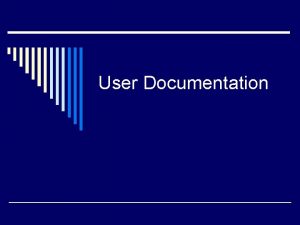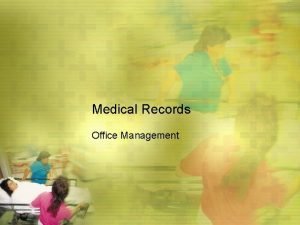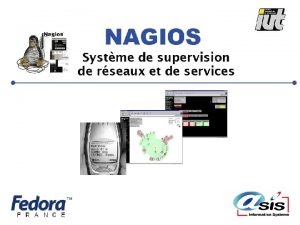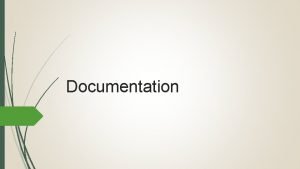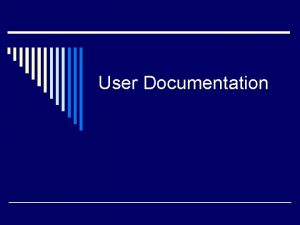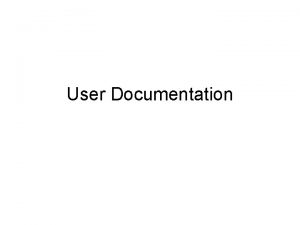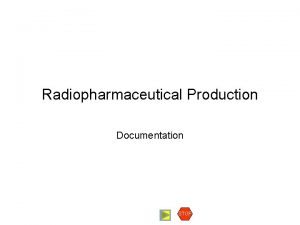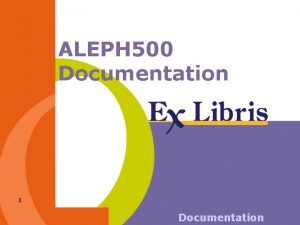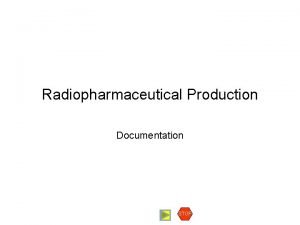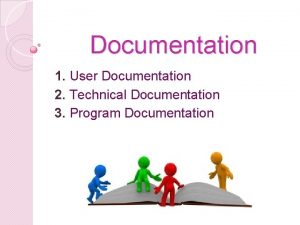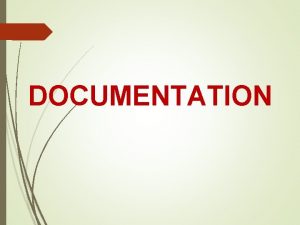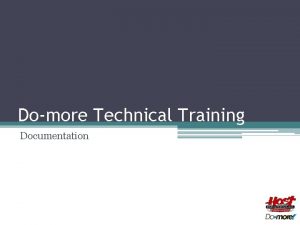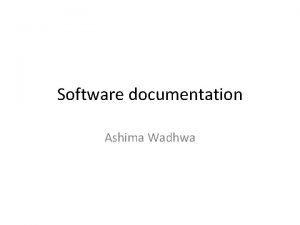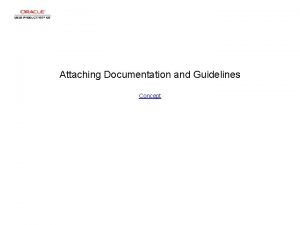Module 5 Documentation Overview Guidelines Types of Documentation

















- Slides: 17

Module 5: Documentation

Overview • Guidelines • Types of Documentation • Best Practices • Learning Check

Documentation Guidelines • Postsecondary institutions may request a reasonable level of documentation • Documentation required should not be unduly burdensome on or discouraging to the student • The documentation process must be accessible to all students and allow for flexibility as needed • Current and relevant, but not necessarily “recent” – depends on the nature of the disability

Types of Documentation • Primary – Student Self-Report • Necessary to fully understand the student’s limitations and provide appropriate accommodations • Secondary – Observation and Interaction • Disability professionals are experts for a reason, and should use their professional judgment to evaluate a student’s needs and recommend appropriate accommodations • Tertiary – External or Third Party • Educational or medical records, reports, and assessments • Helpful in establishing background, developing recommendations, and verifying diagnoses

Best Practices • Documentation should include a diagnosis from a professional capable of establishing that diagnosis • Example: An unlicensed counselor cannot diagnose a mental illness, but a licensed clinical social worker or psychologist can • How old documentation can be should be based on what the disability is and whether it is a chronic or temporary condition • Examples of temporary conditions are learning disabilities and some mental health concerns, especially if the student is receiving ongoing treatment • Documentation should be updated periodically for temporary conditions • Some professionals may indicate either a specific date or general time frame for when the condition will be reassessed

Best Practices (Continued) • IEPs or 504 plans may be considered sufficient documentation for a learning disability if a qualified diagnostic professional has signed off on the paperwork and provided a diagnosis • Psychological evaluations are considered the documentation standard for learning or other developmental disabilities • IEPs and 504 plans are valuable documentation to provide a background of what accommodations the student has received in the past

Learning Check #1 • A student provides you with an IEP which contains a diagnosis for a learning disability and accommodations, signed off by school leadership, the student, and the parent. What further documentation might be necessary? • A. A psychological evaluation from a diagnostician (e. g. psychologist) • B. Medical paperwork from a treating physician • C. Either A or B • D. No further documentation is necessary

Answer for #1 • Either A or B

Learning Check #2 • The paperwork required in the previous scenario would be examples of what type of documentation? • A. Primary • B. Secondary • C. Tertiary • D. Quaternary

Answer for #2 • Tertiary

Learning Check #3 • Postsecondary institutions may request a _______ level of documentation from the student • A. Burdensome • B. Reasonable • C. Minimal • D. None of the Above

Answer for #3 • Reasonable

Learning Check #4 • A student turns in a note from her primary care physician that asks for the student to be provided with testing accommodations due to a generalized anxiety disorder. The note is written on a prescription pad. Is this sufficient to provide accommodations? • A. Yes • B. No

Answer for #4 • Yes, it is a note with a signature from a diagnostician

Learning Check #5 • A student provides you with a discharge note from a hospital with several diagnoses present. What further information would be necessary to establish accommodations? • A. The student’s self-report of how the disability limits them • B. A detailed letter from the original diagnostician covering what testing was used to establish the diagnosis • C. Your own understanding of the disability based on research and previous student experience • D. None of the above

Answer for #5 • Both A and C

References • AHEAD. (2012, October). Supporting accommodation requests: guidance on documentation practices. Huntersville, NC: Association on Higher Education and Disability.
 User documentation guidelines
User documentation guidelines Good documentation practices
Good documentation practices C device module module 1
C device module module 1 Types of medical records
Types of medical records Three types of claims
Three types of claims Www overview
Www overview Maximo overview
Maximo overview Uml overview
Uml overview In uml is a connection among things
In uml is a connection among things Vertical retailer
Vertical retailer Figure 12-1 provides an overview of the lymphatic vessels
Figure 12-1 provides an overview of the lymphatic vessels Overview of the major systemic arteries
Overview of the major systemic arteries Texas public school finance overview
Texas public school finance overview Walmart company introduction
Walmart company introduction Stylistic overview of philippine art
Stylistic overview of philippine art What is sa/sd methodology?
What is sa/sd methodology? Spring framework overview
Spring framework overview Nagios tactical overview
Nagios tactical overview
